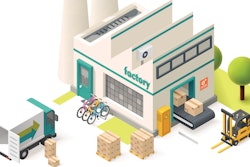The benefits of LED lighting compared to conventional lighting are numerous. LEDs provide maintenance and power savings, as well as performance enhancements such as durability, reliability, longer life span, and consistent color and brightness levels. However, if the LEDs and other components in the circuit are low quality, or the design is not robust, traditional LED benefits are negated. An LED-based design does not inherently offer the benefits that LED manufacturers advertise and, as with most products, you get what you pay for.
Not all applications require a high-quality LED. In many applications, such as simple status indication, a lower quality solution may be the appropriate choice. However, applications that demand precision in color and brightness levels, or operate in harsh environments that require solid-state lighting that is robust and durable, a high-quality LED lighting system is the only solution. Distinguishing quality LEDs from inferior LEDs is difficult, as the naked eye cannot distinguish a high-quality LED from a low-quality LED. A purchaser needs to consider what separates the low-quality LED manufacturers from the high-quality manufacturers. The manufacturing of a quality LED begins at the wafer. Tier-one LED manufacturers produce consistent wafers, which result in high-quality LED chips. A manufacturer’s wafer process, more specifically the materials, substrate, and chemistry used during the process, directly affect the overall performance of a LED. A wafer measuring three-to-five inches in diameter can yield thousands of chips. When the wafer is sliced into chips, each individual chip has different performance characteristics. A quality LED manufacturer, through years of design and development research, has perfected a precise wafer process that produces chips with the fewest inconsistencies in color, intensity, and voltage drop. Tier-one manufacturers also have the ability to identify and separate the LED chips into various bins based on operating characteristics such as color, intensity, voltage drop, and viewing angle; this is known as bin rank. High-quality LED suppliers offer customers chips with a consistent bin rank, and thus a LED with consistent operating characteristics. A low-quality manufacturer offers LEDs of varying bin rank and inconsistent operating characteristics. Consistent bin ranks are an important factor in mission critical and high-end applications, such as subway train lights that must meet a transit authority’s color and brightness specifications. In such applications, LEDs must operate to a specified standard to ensure reliability and safety. LEDs with poor bin ranks used in critical applications result in inconsistent performances that can lead to premature failure. Encapsulation of the LED chip is another variable that affects performance characteristics. The manufacturer’s choice of encapsulate material is an important factor, as is the process in which it is applied. Because the light will travel through the encapsulate material, optical clarity is a concern. To maintain optical clarity throughout the operating lifespan of the LED, it is important that the encapsulation remain consistent. Encapsulate materials can change the viscosity, reactivity, transparency, refractive index, thermal management, and the protection of the device, and if the encapsulate changes in shape or form, the viewing angle of the LED will change as well. Just as important to the performance, brightness, and color of the LED is its assembly with other electronic components in the design. Environmental conditions such as heat, operating currents, and voltage spikes must be addressed when the LED circuitry and assembly are designed. It is critical that an engineer meet the design specifications, but not at the expense of protecting the system from harsh environmental conditions such as heat; as heat is a major cause of LED failure and inconsistent performance. If the circuitry and assembly is poor, the quality of the bin rank and encapsulation of the LED is relatively meaningless. The last step of the design and manufacturing process is the testing phase. Not all manufacturers test their products, another element that separates LED manufacturers. To remove bias from the testing process, many manufacturers use third parties to conduct the tests. Tests include subjecting the LED system to harsh operating conditions such as mechanical stress, temperature cycling, voltage dwelling, current dwelling, and vibration for a period of weeks or more. Tests determine if the product will meet not only design specifications, but also the robustness of the design. A number of before-and-after effects are measured and changes in the brightness, color, and voltage drops of the LED are monitored. Testing an LED assembly can help reduce the number of premature failures in the field. Low-quality LEDs begin to dim, fade, and even burnout within the first few hundred hours of use. Design engineers should request reliability specifications from an LED supplier and also have the LED assemblies tested to confirm the supplier’s claim. Some quality LED suppliers will guarantee their assemblies for three years or more, adding further validation that the end product contains a quality LED that is appropriately designed for the application. Often, the experience of the manufacturer can make the difference in the overall performance and reliability of the LED. As the LED market continues to expand into new industries, the number of LED manufacturers serving the worldwide market has increased rapidly. The surge of new LED suppliers has flooded the market with low-quality LEDs because designers and packaging engineers lack knowledge and experience. For applications that require a quality LED, it is important to properly screen an LED partner through verification of experience and testing of the circuitry and the assembly.Tony Toniolo is president of custom LED solutions manufacturer DDP in El Segundo, CA.
Read Next























